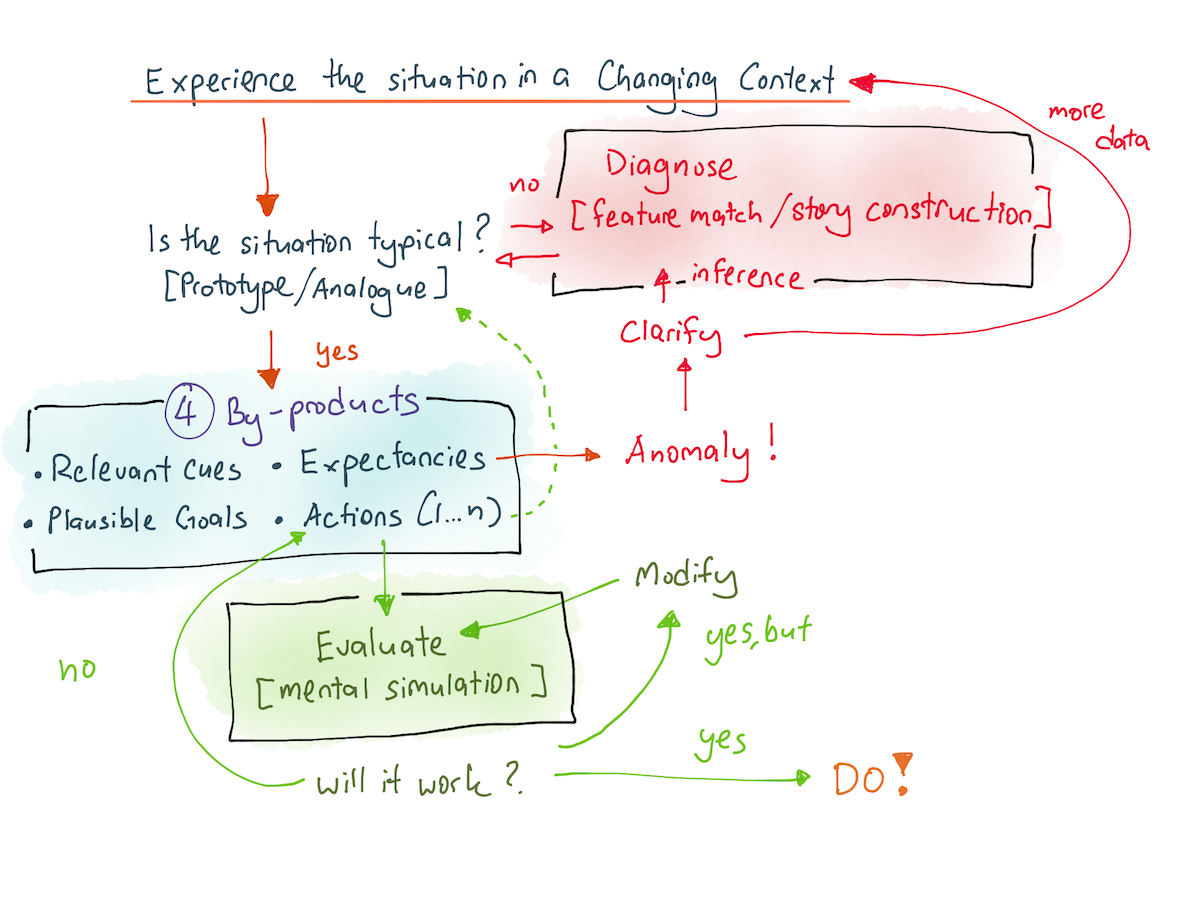Tacit Knowledge
Tacit knowledge is information which cannot be captured through words alone. It is a crucial component of knowledge work, and manifests itself in a ‘knack’ that experts seem to have; an uncanny ability to feel what’s right. This expertise is simply too complex to convert into explicit rules and codified documents—there are too many exceptions and intuitive processes occuring under the surface.
While some fields lend themselves to skill building through deliberate practice, those without a well-established system of teaching require learning through something like an apprenticeship: emulating and receiving feedback from a mentor. Working under a mentor allows you to build ‘prototypes’—typical situations where one can store expectancies (predict the future based on the past), identify cues (what to check and when), learn plausible goals (what to priorise) and internalise action scripts (a standard course of action). Below is a diagram illustrating this iterative process:

Recognition-primed decision making model. Source: Commoncog
Practically, this means asking an expert questions specifically about their expectancies, cues, goals and potential courses of action. While this will be incomplete—expert intuition is difficult to explicate—it is nonetheless an improvement over simply copying them or asking vague questions about how they arrived at their solution. Anecdotally, I have found tremendous insight in absorbing and questioning the stories and experiences of mentors; they are invaluable ways to simulate real-time decision-making and summarise key learnings.
This learning can extend beyond the physical realm and into the world of digital media; YouTube is a tremendously rich source of instructional videos and tutorials. The key here is recognising that if an idea can be clearly articulated, it is not tacit knowledge. An alternative way to learn is to view multiple different videos of experts simply working—not necessarily with a specific teaching goal in mind.
In fact, a more useful way to learn—where the material is available—is by watching a livestream. Livestreams are a real-time simulation of problem-solving which allows us to watch expert practitioners doing their thing. By observing trends and context, plus identifying where variations occur, you can consciously build a more correct model of any given problem.
References
- Commoncog: The Tacit Knowledge Series